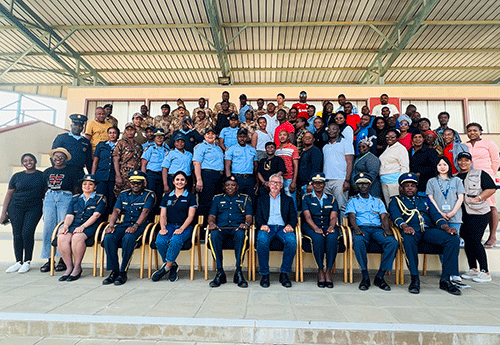The Namibian Police have reminded journalists to be extra careful when covering volatile events, especially those that involve the presence of the police.
Speaking during Nampol’s Training of Trainers workshop on the safety of journalists, Special Reserve Force inspector Shaun Cassidy Vries said sometimes media professionals tend to be part of the demonstrators which puts them in vulnerable positions.
“All we can advise journalists is for them to have their media jackets on, identify themselves, and always stay on the safe side because you do not know what we are going to do at these demonstrations… There are a lot of incidences like the one in Chinatown where journalists were part of the demonstrators. The same goes for #ShutItAllDown, where journalists were part of the demonstrators,” he said.
Vries said once they go active, they use teargas and rubber bullets, adding that these interventions do not kill people but rubber bullets are harmful while tear gas will have an effect on a person’s breathing.
He urged journalists to always be on the safe side or on the rear of the police, adding, “Once that command comes, we concentrate on the demonstrators, and we do not differentiate between media and demonstrators.”
Some of the issues raised by the police include the non-identification by journalists at events, lack of cooperation/arrogance, sensational reporting or publishing unverified information, or impatience when waiting for information from the police, as well as provoking the law enforcers among others.
One Africa Television multimedia journalist Josia Shigwedha pleaded for speedy communication from the police.
“As journalists, we are supposed to inform society on some of the most delicate matters of public interest and create an important platform for public debate, scrutiny and reflection but that does not happen due to the law-enforcement not doing their part. Information is always provided late,” he told New Era.
Shigwedha, who is a camera operator, highlighted that Vries’ suggestion of the media staying behind the police during demonstrations for their own safety, compromises the quality of his work as he needs various shots from different
angles.
He added that when one is in the moment and needs specific shots, safety hardly comes to mind. He, however, said the workshop came in handy, saying it has provided them with an opportunity to learn and understand that journalists should be protected by law enforcement at all times.
The Namibian newspaper journalist Shelleygan Petersen said the media industry is small and there is no excuse for the police to not easily recognise a journalist who is on duty. She referenced cases where due diligence was done by the journalists but ended up getting hurt by the police.
“They must stop hiding behind that ‘wear your media jacket and identify yourself’. Some of us have done that and we were still manhandled. During the #ShutItAllDown protest, I identified myself and was still pushed down the stairs by a law enforcer,” said the disappointed Petersen.
Last year, an NBC radio producer Eliphas Bonifatius laid a charge of assault with intent to cause grievous bodily harm after he was hit with rubber bullets by the police.
The Namibian Police have said they treat every gathering with seriousness, thoroughly preparing for anything that can happen, advising journalists to remain alert at such gatherings and follow the necessary rules and regulations expected of them.


